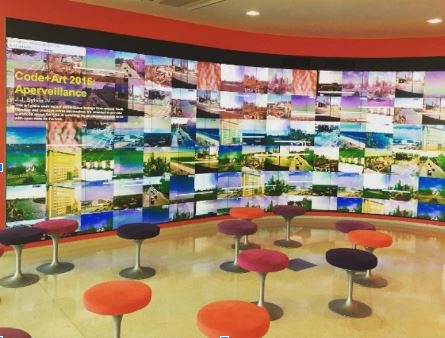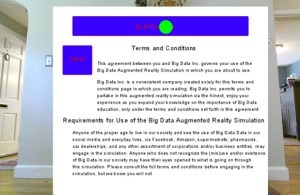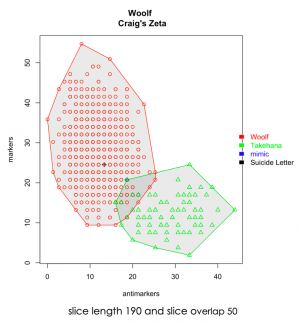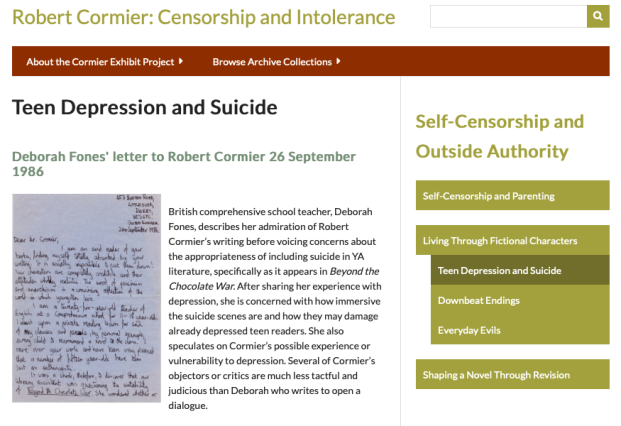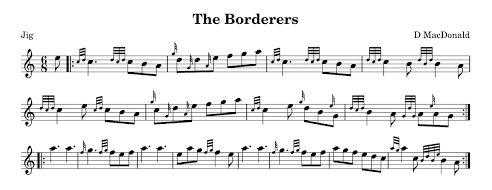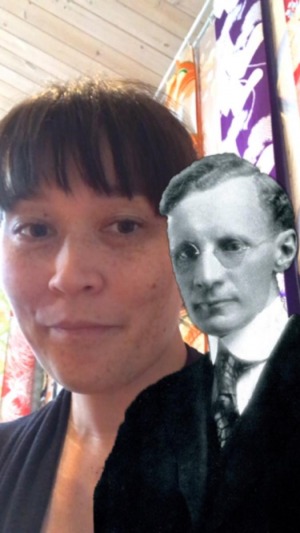Faculty Project Archives
The DMI major grew out of a Digital Humanities (DH) faculty working group at Fitchburg State University, where faculty shared digital-based projects and tools they were using in their courses. Many of the courses that were using these approaches are now part of the DMI major. This page is meant to serve as an archive of the DH and DMI related projects that have occurred here at Fitchburg State.
Digital technologies and their affordances allow for unprecedented views of humans and the world they inhabit. More than an upgrade to previous inscription and storage media, digital technologies permit access to whole other realms, as the microscope and telescope opened our eyes to worlds we could not perceive prior to their invention.
“Digital Humanities” research does not necessarily result in a digital product, nor is its work done exclusively in fields commonly designated as among the humanities. Rather DH grapples with the ideologies and scale underpinning digital technologies and our deployment of them. DH seeks out many “Dimensions of Humanness” by applying all disciplinary eyes on working through the “wicked problems” that arise from being human in a digital era. At Fitchburg State, DH encompasses exploring how the humanities are meaningful to the digital as well as how the digital affects the humanities.
Cultural Heritage though Image (2015-present, Kisha Tracy and dozens of students) uses photography to connect ancient and medieval cultural heritage of other countries to the cultural heritage of local communities, particularly in New England.
The digital exhibition is under continual development, and the project has presented physical full exhibitions at the Fitchburg Art Museum, the Amelia V. Gallucci-Cirio Library at Fitchburg State, and the Hammond Castle Museum in Gloucester, MA.
In addition, Cultural Heritage through Image also has presented themed exhibitions, including one on women for the Women in Arts event at Fitchburg State and another on Africans and African-Americans for the African Festival of Boston (part of the entries for the Festival exhibition developed from a partnership with the Museum of Fine Arts Boston to highlight their Nubian collection).
Currently, the project is developing a disability-focused exhibition. Cultural Heritage through Image has become a successful public engagement project, starting with the work of students from a variety of disciplines (English Studies, Art, History, Photography, Communications Media, Disability Studies, etc.) and expanding into the community via the historical society, library, art museum, the Boys and Girls Club, and adult learning programs.
We have received funding or assistance of other kinds from the Massachusetts Cultural Council, the Freedom’s Way National Heritage Area, and Fitchburg State.
Aperveillance (2016-2018, J.J. Sylvia IV) -- This project uses the emerging p5.js programming language to create a dynamic visualization based on several data sources:
- Webcam images that are publicly available
- If a webcam is attached to the computer that is running the visualization, it will capture an image from the camera to be included randomly with the other webcam images.
- Open crime data to include information about the previous day’s crimes juxtaposed on top of the webcam images.
The juxtaposition of these images and data is intended to provoke questions about the type of watching we as citizens are able to do with webcams (sousveillance), open data (aperveillance), and unexpected images of ourselves (surveillance). The inclusion of an image from the local webcam typically generates confusion and raises questions about whether this image is available on the web for others who may be viewing the project. This disorientation is designed to make real the sense of confusion that stems from the lack of understanding the exact mechanisms of surveillance in our day-to-day communications. Which organizations and governments are able to access our data, and how frequently is it viewed?
Engaging with the exhibit stimulates questions to further open the dialogue about the intersections of surveillance, sousveillance, and the emerging possibilities of aperveillance. What concerns, but also what possibilities arise out these multiveillances?
Becoming Data (2018-Present, J.J. Sylvia, Nick Cazmay, Nathanael Molnar) – Becoming Data is an augmented reality (AR) choose-your-own-adventure style narrative experience that allows participants to develop a deeper understanding of how their data is collected, analyzed, and commodified. This experience makes the otherwise technical and abstract ethical and legal issues surrounding big data more personal. In Becoming Data, the line between the human participant and their data is blurred, as participants see how their decisions and actions are translated into big data and how that big data is used in ways that impact one’s daily life.
Nice Outsides (2018-present, Elise Takehana) – A long-term project to create anagrams of anglophone authors’ suicide notes into written passages that would be attributable to the suicidal author. The project explores differences between machinic and human interpretations of written style. It also asks how generalizable language patterns that humans are attracted to register when considered in quantitative terms.
Robert E. Cormier Digital Archive Exhibits (2014-present, Elise Takehana, AnnaMary Consalvo, Asher Jackson, and Katy Covino) – Small digital exhibits of archival material that highlight representative texts of the Robert E. Cormier collection made available to encourage continued digitization and curation of the collection and further research on the author’s work. Exhibits chronicle important topics in young adult literature such as censorship and tolerance, bullying and authority, and the sexualization of children. Currently included are digitized copies of artifacts, but continued revision to the exhibits will include adding transcriptions and textual analysis tools to ease more computational analytical methods of study for scholars and students.
The Donald MacDonald Project (2017-present, Dr. Amy McGlothlin) Reprints of an early 19th century publication of bagpipe music using Lilypond to engrave the music and LaTex to typeset the book. There is a significant change to the types of embellishments used in bagpiping since this book was originally published. The new work will feature both the historical setting as well as a modern setting of the music with historical notes on the changes that were made. The project’s blog is periodically updated when interesting research or coding issues arise.
Adopting and Adapting Digital Documents to Enhance Historical Thinking (sabbatical 2019-present Dr. Laura Baker) My interest in digital technologies is guided by my concern for increasing access to historical scholarship. This interest has led me to adopt OER textbooks and to create my own digital textbook using presentation software. Digital texts designed with presentation software preserve useful features of the book and at the same time allow for extensive visual content—a distinct advantage for historical scholarship that, like mine, draws heavily on non-written sources. Combined with principles of graphic design, the juxtaposition of text and image creates opportunities for deeper understandings and insights. I am piloting my first such creation, a textbook on U.S. immigration history, in my fall 2019 course "Immigration and American Identity," and am planning on revising the text into an OER publication.
When We Were Normal (2015-present, Elise Takehana and dozens of students) – An augmented reality tour of the Fitchburg State University campus collaboratively constructed with students who conduct archival research and digitize historical artifacts to include with what functions like a nonfiction locative narrative. The project currently includes the seven oldest buildings on campus and will expand to further buildings and hopefully into the larger Fitchburg area.
Laura Baker – Professor of History. Baker’s research examines contemporary social issues in historical perspective, and from the perspective of local and regional communities. Her most recent project, a course on immigration, uses digital technologies to create text-based scholarship for student use that preserves features of the book while at the same time incorporating extensive visual content. Her interest in Digital Humanities stems from a desire to make the experience of history education more expansive and inclusive.
Dr. Jane Huang - Professor of Geography. Huang is a broadly-trained geographer with a specialty in Geographic Information Science (GIS). Her research focuses on community-based application of geospatial technologies and spatial data visualization. Huang and her student teams have been awarded multiple interdisciplinary research grants. Some examples are:
- Community de-leading mapping and spatial analysis
- Watershed trail surveying and mapping
- Regional housing market mapping analysis
- Broadband high-speed internet distribution mapping
- GPS survey of traffic congestions
- Community crime hotspots mapping analysis
- GPS Survey of Community Trails
- Community GIS mapping for regional zoning
- Regional economic development mapping
- Urban structure study
- Regional traffic mapping and analysis
- Trail survey for public health
- Digitally inventorying farmland
- Neighborhood property mapping and analysis
- Environmental and public health of the Fitchburg community
- Mapping the Opioid Epidemic in Fitchburg
Dr. Randy Howe is a professor of Communications Media who has been with the University since 1998. A former graphic designer, researcher, and management consultant for several firms, Dr. Howe's broader interests include creativity and visual literacy, with a media focus on print and interactive media. Additional research interests include instructional design, semiotics, information design, educational technology, collaborative work, and advertising.
Dr. Amy McGlothlin – Amy McGlothlin is an Assistant Professor at Fitchburg State University where she is the Director of Bands. Amy is a saxophonist and bagpiper and is the musical director of Clan MacPherson Pipes and Drums of Lawrence, MA. An active educator, Dr. McGlothlin gives masterclasses to chamber groups, soloists and ensembles throughout the United States. Her areas of research include historical bagpipe music and romantic era music by women composers. Amy is a Yamaha Performing Artist and Rovner Products Ambassador.
J.J. Sylvia IV – Associate Professor of Communications Media. His research focuses on understanding the impact of big data, algorithms, and other new media on processes of subjectivation. Using the framework of posthumanism, he applies an affirmative and activist approach to contemporary data studies, highlighting the potential for big data to offer new experimental approaches to the way we construct ourselves as subjects. He has published “Code/Art Approaches to Data Visualization” in the 2018 edited collection Research Methods for the Digital Humanities.
Elise Takehana – Professor of English Studies. Takehana’s research considers overlaps in media studies and literary textual production including electronic literature, representational and aesthetic practices across media, and the written word as medium. Her book Baroque Technotext: Literature in a Digital Mediascape, published by Intellect, is forthcoming winter/spring 2020. Her current research turns toward stylometry, digital textual analysis, and code literacy.
Getting Started:
Carnegie Mellon prepared the “Digital Humanities Literacy Guidebook” with overviews of topics and methods in the field and suggested tools. It also includes profiles of projects from across the country and a listing of scholarly avenues to pursue publication and conference presentations in DH.
Bridgewater State University produced a research guide that provides a broad overview of tools, projects, training, pedagogical approaches, and suggested readings on the digital humanities.
The NULab for Texts, Maps, and Networks at Northeastern University includes a rich events calendar and resources page in addition to profiles of projects their center supports.
Tools and Training:
The Programming Historian provides tens of lessons on types of DH practices or tool use from coding and network analysis to digital publishing and mapping.
NYU Libraries produced a research guide that compiles digital tools by function or application.
With a Boston Library Card, available to Massachusetts residents online, you can have access to Lynda.com with courses on a number of topics including coding and technology
